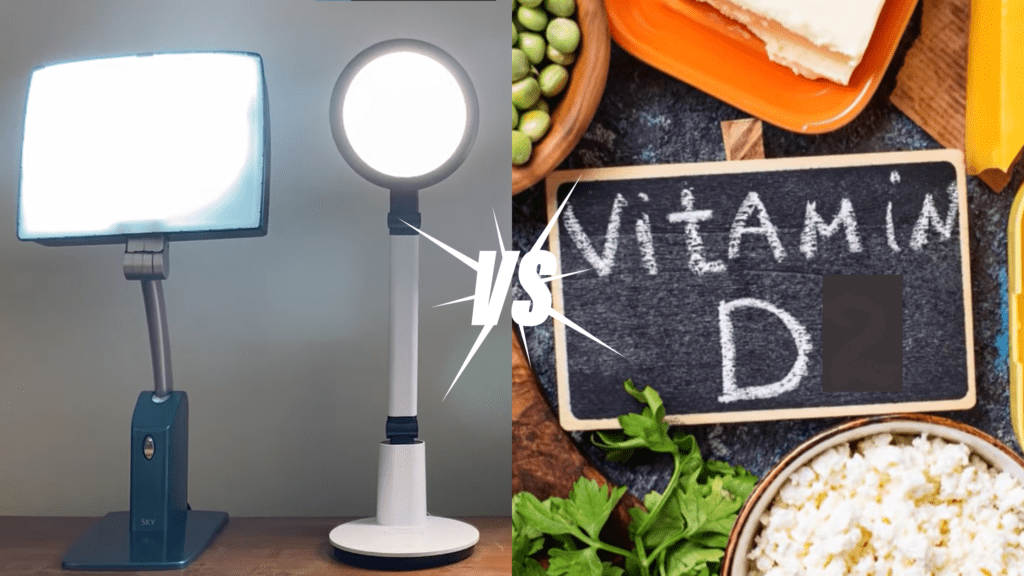Living in a world with distinct seasons and varying sunlight exposure, it’s natural to wonder about the impact of light and its connection to our well-being. Two elements often come into play: light therapy and vitamin D. While both influence our health, they serve distinct purposes. Let’s delve deeper into understanding the differences between light therapy and vitamin D.
What is Light Therapy?
Light therapy, also known as phototherapy, involves exposing yourself to controlled doses of artificial light. This light mimics natural sunlight, particularly the specific wavelengths crucial for regulating our internal clock (circadian rhythm). Light therapy devices typically emit bright white light, excluding harmful ultraviolet (UV) rays.
Applications of Light Therapy:
- Seasonal Affective Disorder (SAD): Light therapy is a well-established treatment for SAD, a type of depression that occurs seasonally, often during winter months with decreased sunlight exposure.
- Sleep Disorders: Light therapy can help regulate sleep patterns in individuals with conditions like delayed sleep phase syndrome (DSPS), where falling asleep and waking up occur later than desired.
- Jet Lag: Adjusting to new time zones can disrupt sleep. Light therapy can help re-synchronize your circadian rhythm after travel.
What is Vitamin D?
Vitamin D is a fat-soluble vitamin obtained through two primary sources: sun exposure and dietary intake. Sunlight triggers vitamin D synthesis in the skin. However, factors like skin pigmentation, sunscreen use, and geographical location can significantly impact this production.
Functions of Vitamin D:
- Bone Health: Vitamin D plays a vital role in calcium absorption, essential for building and maintaining strong bones. Deficiency can contribute to conditions like osteoporosis.
- Immune Function: Vitamin D supports a healthy immune system, potentially aiding in defense against infections.
- Other Potential Benefits: Research suggests vitamin D may play a role in mood regulation, muscle function, and even certain chronic disease risks.


Key Differences Between Light Therapy and Vitamin D
| Feature | Light Therapy | Vitamin D |
|---|---|---|
| Type | Treatment modality using artificial light | Essential nutrient |
| Target | Regulates circadian rhythm | Supports various bodily functions, including bone health |
| Delivery Method | Controlled exposure to specific light wavelengths | Dietary intake, sun exposure, or supplementation |
| Applications | Seasonal affective disorder (SAD), sleep disorders | Bone health, immune function, potential role in mood |
Understanding the Diagram
Important Considerations
- Light therapy and vitamin D supplementation should be used under the guidance of a healthcare professional to ensure appropriate dosage and avoid potential side effects.
- Light therapy is not a replacement for a balanced diet and healthy lifestyle habits.
Conclusion
Light therapy and vitamin D address different aspects of health. Light therapy targets the circadian rhythm, improving sleep and potentially mood, while vitamin D supports various bodily functions, particularly bone health and immune function. Consulting a healthcare professional can help determine if light therapy, vitamin D supplementation, or a combination of both might be beneficial for your specific needs.


